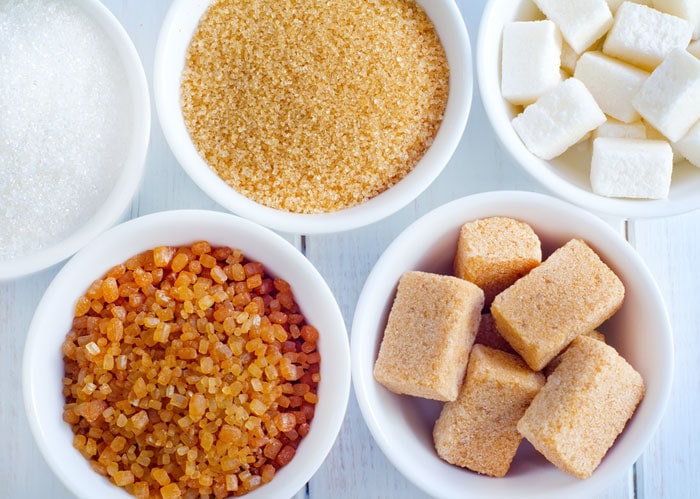
Written By: Sofia Layarda, MPH
Title: Master of Public Health
Alumni: University of California, Berkeley
Last Updated on:

Do you have diabetes? One of the revised diabetes guidelines from the Canadian Diabetes Association states that added sugar can constitute 10% of energy (which can be up to 50 g on a 2000 kcal daily calorie intake). Is it really appropriate to consume this much sugar – the equivalent of 12.5 teaspoons – when you have diabetes? What about artificial sweeteners?

Table of Contents
The American Diabetes Association does not set a specific limit on added sugar. However, they do recommend that total carbohydrates at meal time (including both carbohydrates from starchy foods and added sugar) be no more than 45 to 60 g per meal. The recommendation for sweets is to save eating them only for special occasions, and even then to have just one small serving. If you cannot resist desserts, enjoy them only when away from home and share with someone else.
The American Heart Association guideline suggests a daily maximum of 6 tsp of added sugar for women and 9 tsp of added sugar for men.
If you think you’re in the clear because you don’t add sugar to your coffee, think again. Some foods and drinks can put you over your daily limit for added sugar in one serving. For example, a Starbucks Frappuccino blended coffee drink has 36 g of sugar in a tall 12-oz serving.
Added sugar is in a lot of foods now, including some breakfast cereals, granola bars, and yogurt. Here are some examples:
| Food | Amount of sugar |
| A 12 fl-oz can of soda | 39 g (10 tsp) |
| Tillamook Yogurt, Oregon Strawberry Lowfat, 6 oz | 30 g (7.5 tsp) |
| Yoplait Thick & Creamy Yogurt, Lowfat Strawberry, 6 oz | 28 g (7 tsp) |
| Kit Kat Milk Chocolate Candy Bar, 1 package | 21 g (5.25 tsp) |
| Kellogg’s Honey Smacks Cereal, 1 oz | 15 g (3.75 tsp) |
| General Mills Trix Cereal, 1 oz | 12 g (3 tsp) |
We find the Canadian guidelines – which translate to 12.5 teaspoons of added sugar for women or 16 teaspoons for men – are still too high. Our take is that you should minimize added sugar from foods.
If you must add sugar, such as to a cup of coffee or tea in the morning, use no more than a teaspoon. The other factor that will impact how fast sugar can enter your bloodstream is whether the sugar-sweetened drink is consumed on an empty stomach or with food. Sugar from beverages consumed on an empty stomach will be absorbed faster than when the sugary drink is consumed along with food.
As a regular reader, you know we are not big fans of artificial sweeteners. Artificial sweeteners have been linked to higher risk of obesity and Type 2 diabetes. Artificial sweeteners also make your taste buds accustomed to a very sweet taste, therefore making healthier, less-sweet foods not as appealing to consume.
Alumni: University of California, Berkeley – Sofia believes in bringing back fun and pleasure into everyday eating. She loves cooking, and is constantly experimenting with ingredients, creating recipes and trying them out on family and friends. Her latest interest lies in finding realistic and practical ways of environmentally-friendly food/eating habits.
blood sugar, diabetes diet, sugar